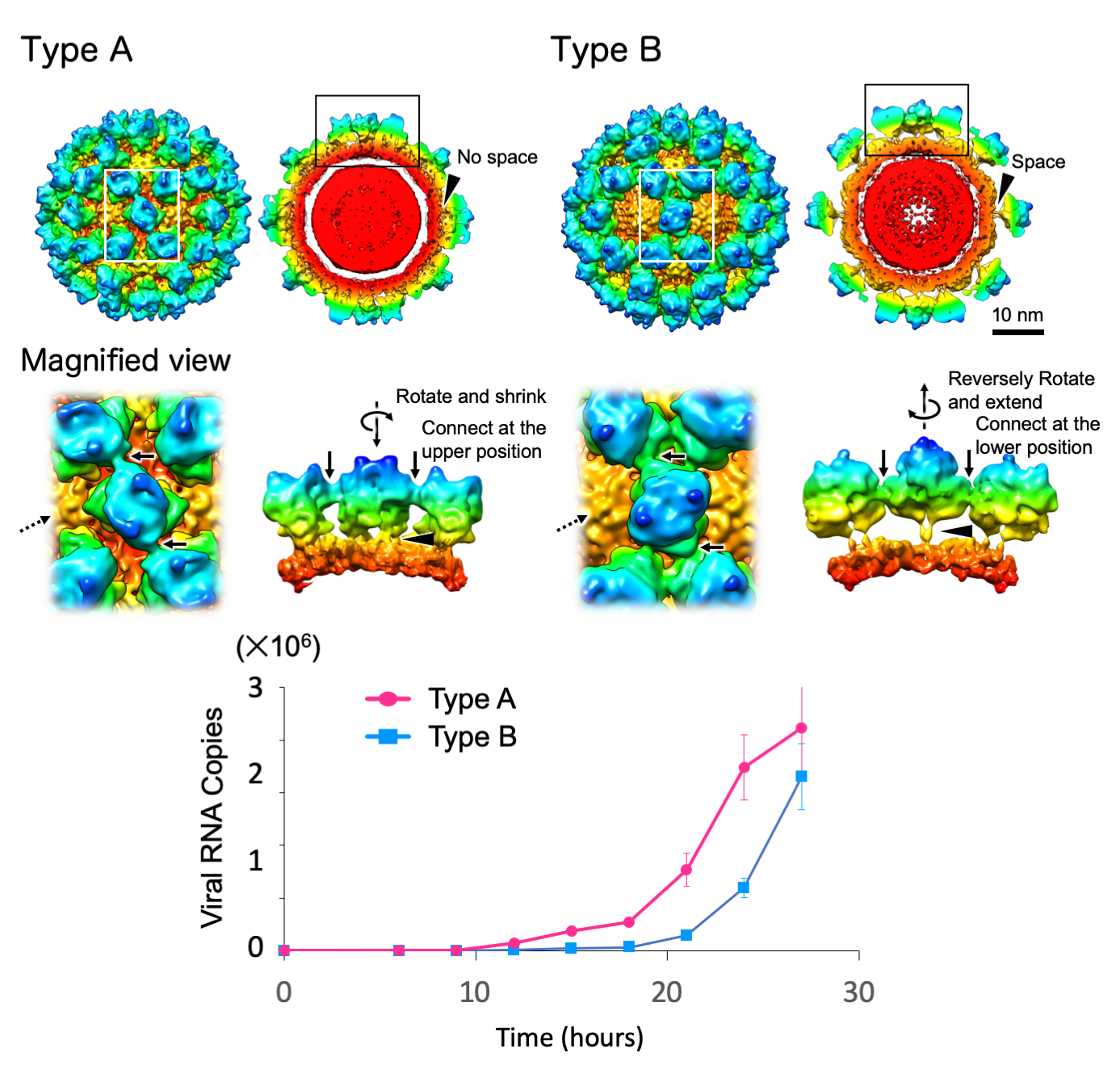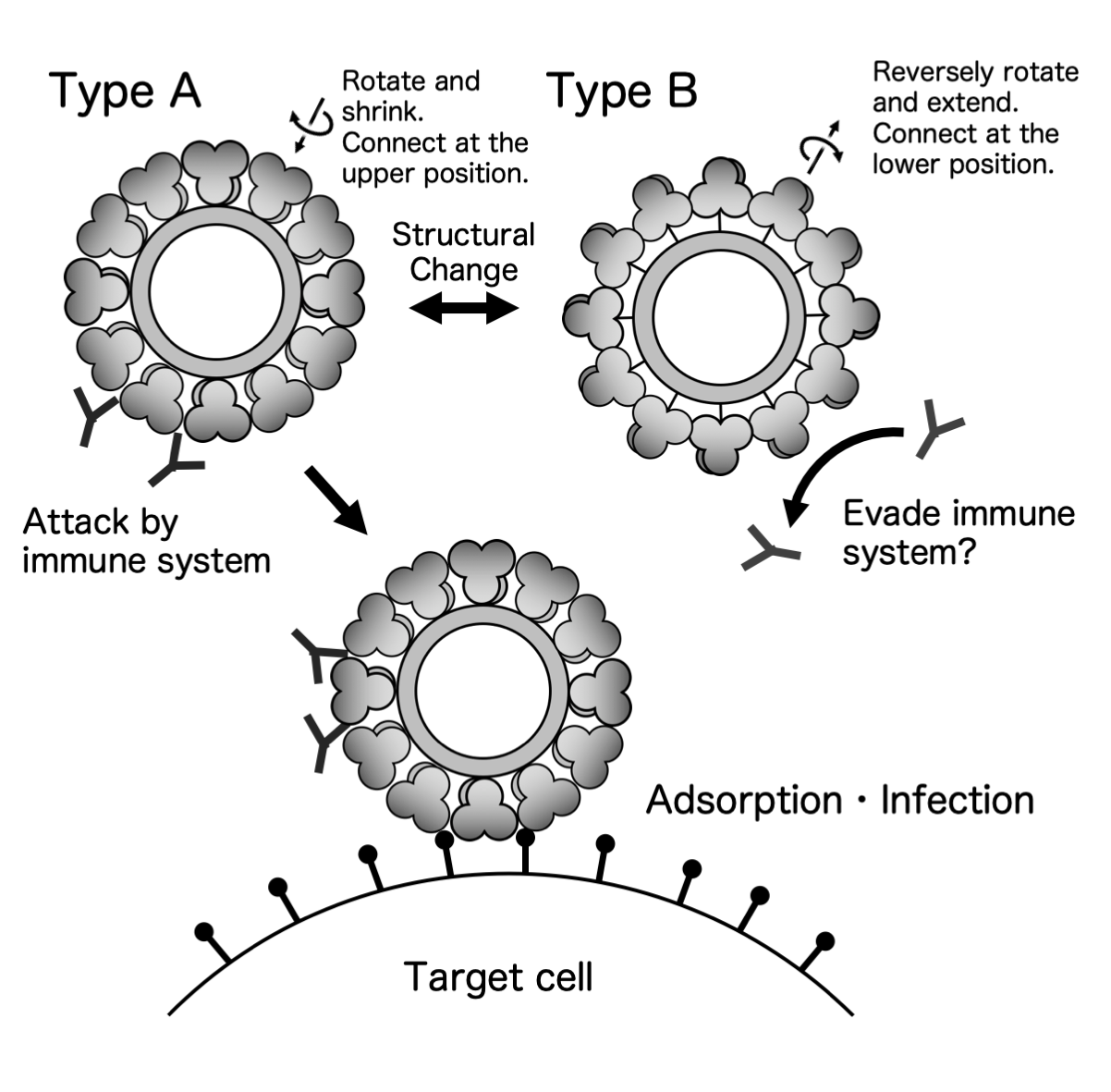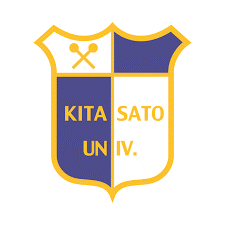Researchers from the National Institute for Physiological Sciences and Kitasato University in Japan discover that mouse norovirus has two capsid structures and changes from one to the other before infection. Human norovirus also exhibited two similar capsid structures, but the mechanism of change has not yet clear. This should accelerate the development of therapeutic drugs and vaccines.
Okazaki, Japan – Human noroviruses are a major cause of gastroenteritis outbreaks worldwide. They cause approximately 200,000 deaths each year in developing countries. However, no effective vaccine or antiviral agent for noroviruses yet exists because cell culture methods to produce noroviruses are very limited and there is a lack of the viral structural knowledge about the virus.
In this study, the researchers have investigated the mouse norovirus structures using cryo-electron microscopy and discovered that the noroviruses present two alternative capsid structures (type A and type B) (Fig. 1 top). Noroviruses are covered by two layered proteinaceous domains, an outer protruding (P) domain and an inner shell (S) domain. Type A shows tight interaction between the two domains, with no space between them, while type B displays the P domain dislocated above the S domain with a space between them. This result has raised the questions, "How do these capsid structures switch?" and "Why do noroviruses need two capsid structures?".

Fig. 1 Mouse norovirus has two capsid structures (type A and type B). Type A particles propagate about 4 hours faster than type B particles (bottom).
Further investigations showed that the two structures of mouse norovirus particles switch depending on aqueous conditions. Viral particles showed the type A structure in lower pH solutions including metal ions, while type B structure was favored in higher pH solutions lacking metal ions. Type A was formed by rotation and shrinkage of the P domain and stabilized with an interaction between neighbors at the upper part, while type B was formed by the reverse rotation and extension of the P domain and stabilized with an interaction between neighbors at the lower part (Fig 1 middle).
Mouse noroviruses showing two structures were individually infected into cultured cells. Type B particles showed four hours delay of propagation comparing to type A particles (Fig. 1 bottom). Another experiment found that type B particles showed less adsorption to host cell surface than type A particles. It was concluded that mouse noroviruses change their structure from B to A before infection.
"Why do noroviruses need two structures?" This has not been clarified, but the researchers speculate that it is used to evade the host animal's immune system. Noroviruses are transmitted primarily through the oral route, and infect cells of the small intestine. Noroviruses may evade the immune system with the type B structure, and approach the small intestine. Then, they finally infect cells by changing to the type A structure (Fig. 2).

Fig. 2 Alternative capsid structures in mouse norovirus and the infection mechanism
The research reveals a part of viral structural change and infection mechanism of mouse noroviruses. Two capsid structures were also identified in the human norovirus VLP, but it has not elucidated the switching mechanism of the structure yet. It is hypothesized that a similar mechanism is also used in human norovirus. Further investigation will clarify the switching mechanism of the structure and infection manner of human norovirus, hopefully assisting development of therapeutic drugs and vaccines in the future.
####
The article, “Dynamic rotation of the protruding domain enhances the infectivity of norovirus” was published in PLOS Pathogens below.
https://journals.plos.org/plospathogens/article?id=10.1371/journal.ppat.1008619
Summary
Researchers from the National Institute for Physiological Sciences have discovered that mouse noroviruses have two alternative capsid structures and change from one to the other before infection. The two capsid structures were also identified in human norovirus VLP. The result will accelerate the development of therapeutic drugs and vaccines.
Primary keyword: Virology
Additional keywords: norovirus, capsid structure, cryo-electron microscopy, atomic model, conformational change, viral infection, development of therapeutic drugs and vaccines
Twitter comment: Norovirus shows two alternative capsid structures which change before infection



The National Institute for Physiological Sciences (NIPS)
The Kitasato Institute
Japan Agency for Medical Research and Development